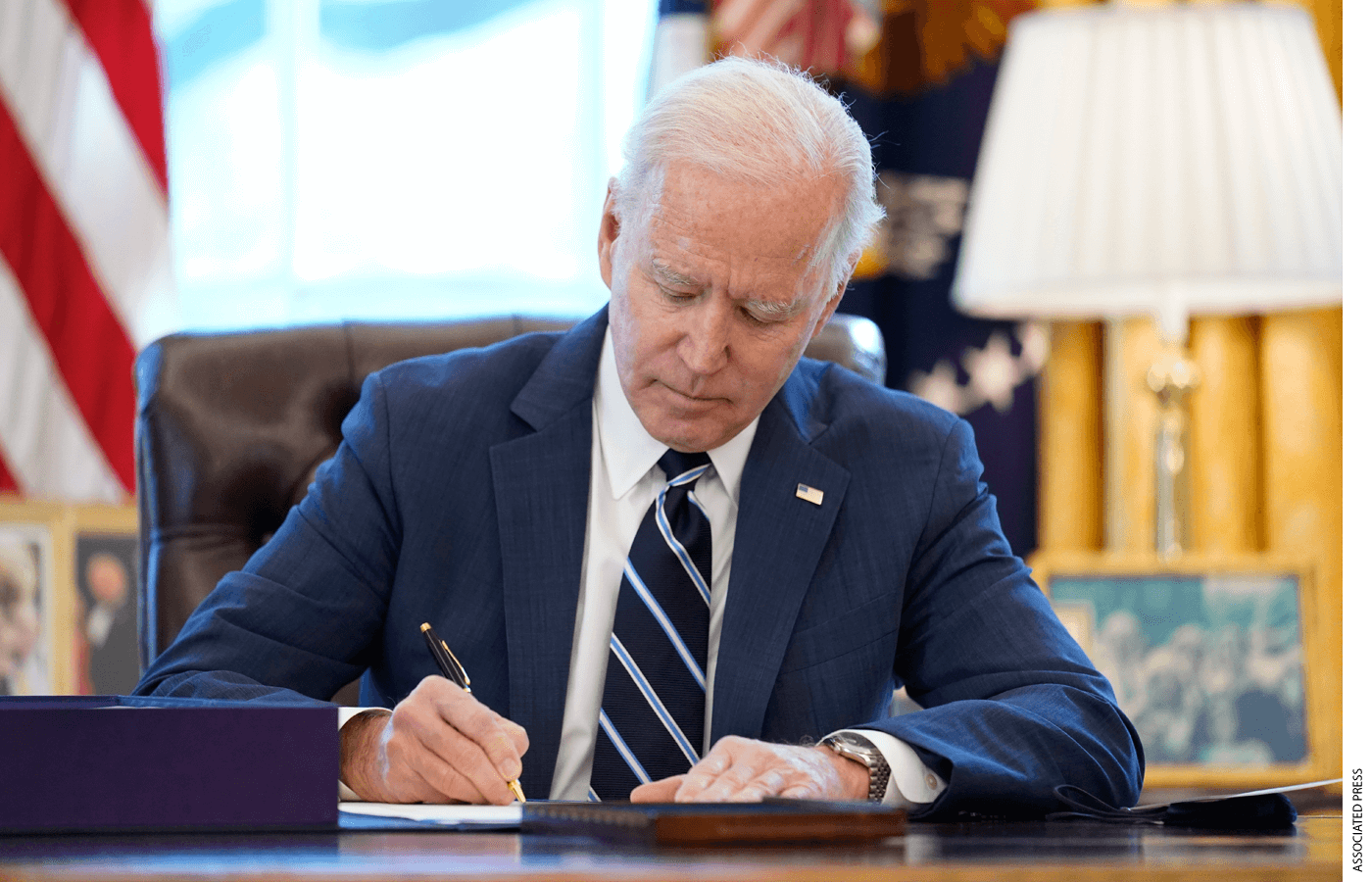
District leaders may be celebrating the $122 billion in stimulus relief Congress approved for K-12 schools last month. But with more money comes more pressure for local leaders to spend those dollars in ways that do the most good for students while avoiding budget pitfalls.
There are few limitations on the funds. The law stipulates that 20 percent of the money be used to “address learning loss” among students through the use of “evidence-based interventions.” Congressional appropriators listed summer programs, extended school days, or afterschool programs as optional uses of money, but, as a practical matter, districts could justify almost anything from tutoring to improving building-ventilation or even adding more staff. Honestly, we’re challenged to find something that districts couldn’t spend their money on.
However, the aid is temporary. Leaders who commit to things they won’t be able to afford once the money runs out are setting themselves up to fall off a funding cliff in a few years.
So, how can district leaders make good spending choices? Now is a great time to employ the classic “would you rather” test to help explore spending tradeoffs and think through the cost and value of competing investments with finite dollars at hand. Crafting a range of spending options that all carry the same price tag can help leaders grapple with which option has the potential to do the most good for students, while acknowledging the tradeoffs associated with each choice.
The latest round of stimulus works out to an average of $2,450 per student, although the amounts vary widely by state and school district. Consider the following spending options for a district aiming to spend a portion of its money to alleviate unfinished student learning. Each option would cost about the same $1,000 per pupil. For that amount, a district could:
A. Reduce class sizes by two students for a year
B. Extend a school year by four weeks for all students
C. Provide one-third of students with a year’s intensive tutoring
D. Offer 4-week learning camps for all K-5 students this summer and next
E. Give principals the money to decide what makes the most sense in their school
These are back-of-the-envelope estimates, and districts should run their own numbers. But there are clear tradeoffs across and within each option.
The class size reductions in option A would reduce each teacher’s workload a bit, but they would not add any more instructional time for students who may have only received a partial education this year. To make it work, districts would need to hire new, full-time teachers, which could get tricky when the money runs out.
Option B would add instructional time for students, but like option A, it’s a one-size-fits-all approach, meaning the dollars wouldn’t be targeted specifically to the kids who need the most support.
The tutoring in option C could be used to target aid directly to the students who needed it the most. Success will hinge on whether schools can launch a large-scale, effective tutoring program outside of their normal classroom schedules, as well as whether the students who need it agree to participate.
Context matters too. For instance, the learning camps in option D may work better in communities where there’s more appetite for summer programs, but take-up rates would depend on community preferences and the availability of competing options.
Shifting the decisions to principals, as would be the case with option E, allows school leaders to customize supports based on the needs of their own mix of students. While that might spur some innovative responses, it would mean less consistency from school to school.
Another important step in the “would you rather” test is to consider what use of the funds would bring the most value to the family. From a family’s perspective, does their child need tutoring or a summer camp? Or would they prefer to spend the $1,000 on something else entirely?
Every district will need to decide which tradeoffs make sense based on their own community. But whatever option(s) a district picks (from this list or one they draft themselves), the imperative for all district leaders is the same: Focusing on doing the most for students with the money.
Education spending always involves choices. Smart choices require understanding the value of each dollar, and “would you rather” questions help leaders to reflect on their assumptions about how a program or service is best structured, what outcomes will be achieved, the benefit to the student, and at what cost.
“Would you rather” choices also help build community engagement and trust. Parents, teachers, and other stakeholders can be invited to weigh their preferences among different cost-equivalent scenarios.
It’s no accident that all the spending options presented above are cost-equivalent investments over a limited period of time. That’s because districts can get into trouble when they obligate themselves to recurring spending that has no end date.
Given the time-limited nature of the federal funds, we caution districts against using the funds to hire a slew of new employees in the same ways as they did pre-pandemic. When the money runs out, no district wants to be considering furloughs or layoffs a few years from now. And there are other, more financially sustainable options for adding labor, such as contracting or paying stipends to current staff who agree to take on more work.
One thing’s for sure: District leaders should prepare to be judged for how they spend their federal relief money. Big one-time sums draw big scrutiny. Those who take time now to weigh a range of cost-equivalent options may avoid decisions that come back to haunt them long after the pandemic abates.
Marguerite Roza is research professor at Georgetown University and director of Edunomics Lab, where Chad Aldeman is policy director.


